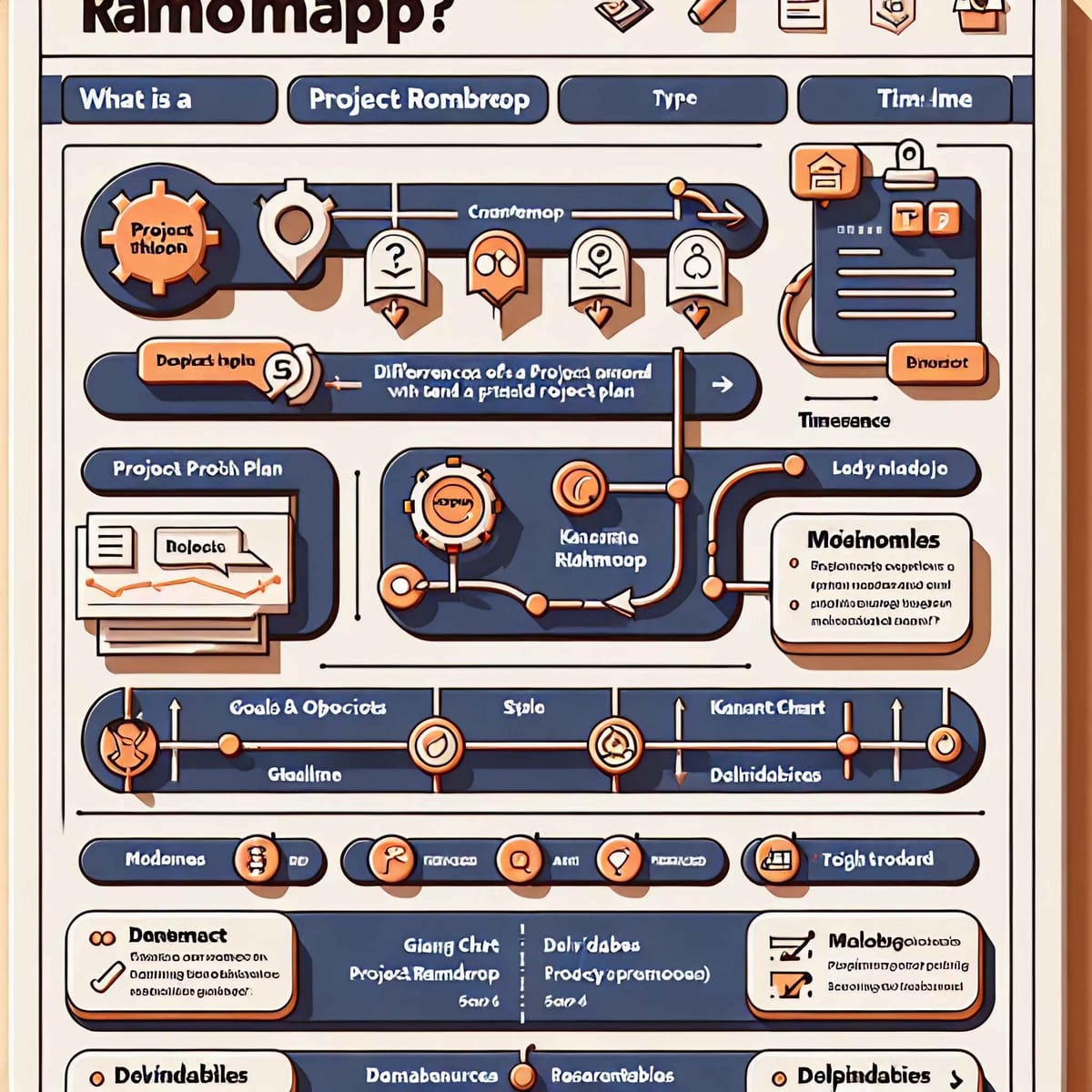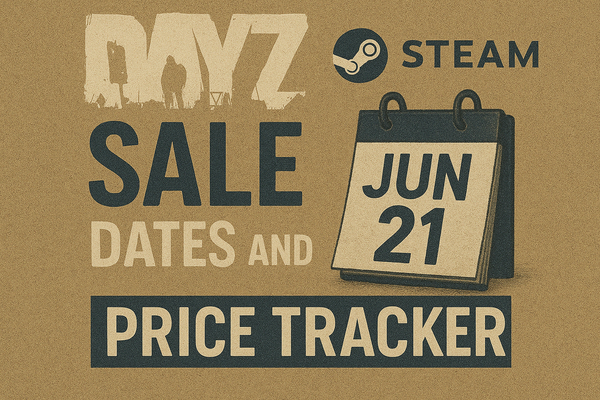Browsing Success with a Project Roadmap Design Template

In the busy globe of project administration, having a clear instructions is crucial. Picture embarking on a lengthy road trip without a map or GPS– you may ultimately reach your location, yet not without unnecessary detours and delays. Similarly, a job roadmap acts as a guiding light, guiding your task in the direction of success while staying clear of usual pitfalls. This blog will certainly decipher the secrets of project roadmaps, explore their parts, talk about numerous themes, and supply steps to create your very own roadmap. By the end, you'll be equipped with the expertise to drive your following job to success.
What is a Project Roadmap?
A job roadmap is a top-level strategic plan that lays out the key actions, milestones, and purposes of a task. Unlike a thorough project plan that studies the fundamentals of tasks, budgets, and timelines, a roadmap provides a more comprehensive view, concentrating on the "what" and "why" rather than the "how." It records the significance of the task, supplying stakeholders a visual representation of the project's objectives and development. This distinction makes it an important device for aligning team efforts and guaranteeing everybody gets on the same web page.
The importance of a project roadmap in task monitoring can not be overstated. It works as a communication device, bridging the gap between the task group and stakeholders. It offers a shared understanding of the task's trajectory, assisting in informed decision-making and prioritization. By highlighting the job's vision and goals, a roadmap maintains the group focused and inspired, even when challenges develop.
Why You Required a Task Roadmap
The advantages of having a clear, visual roadmap for task success are manifold. To start with, it enhances communication amongst employee and stakeholders by providing an usual recommendation point. When every person recognizes the task's purposes and landmarks, cooperation becomes smoother, lowering misconceptions and problems.
Second of all, a project roadmap cultivates liability and transparency. Team members can conveniently track development, recognize potential obstructions, and make necessary changes. This positive technique lessens threats and enhances the likelihood of providing the project in a timely manner and within budget.
Lastly, a roadmap empowers decision-makers to assign sources successfully. By picturing the job's timeline and dependences, supervisors can optimize resource allotment, ensuring that critical tasks receive the focus they are entitled to. This strategic placement improves efficiency and takes full advantage of the project's total success.
Key Components of a Task Roadmap
Goals and Purposes
Defining clear and measurable goals is the foundation of a successful job roadmap. Objectives offer instructions and purpose, serving as the north star that guides the task team. To set efficient objectives, take into consideration the wise requirements– details, quantifiable, achievable, appropriate, and time-bound. This makes certain that goals are realistic and straightened with the job's total vision.
Goals, on the other hand, break down the objectives into actionable actions. They detail the certain results that require to be achieved to get to the overarching objectives. By establishing clear objectives, project supervisors can develop a roadmap that is both calculated and workable, giving a roadmap to success.
Turning points
Turning points are significant checkpoints along the project timeline that show development and accomplishment. They act as pens of success, enabling the team to celebrate success and remain encouraged. Setting and tracking milestones is crucial for keeping the job on course and making certain that deadlines are fulfilled.
When defining milestones, concentrate on key deliverables and results instead of individual jobs. This permits the group to prioritize their initiatives and maintain energy. Frequently examining and upgrading landmarks ensures that the job continues to be on course and aligns with altering concerns.
Timeline
Describing the project timeline is an important component of a task roadmap. It provides a graph of the project's duration, highlighting vital phases and deadlines. A distinct timeline allows task managers to prepare resources, assign responsibilities, and manage assumptions effectively.
To develop an exact timeline, begin by recognizing the task's major phases and their particular periods. Break down each phase into smaller jobs and estimate their conclusion times. This detailed break down guarantees that the timeline is realistic and possible, reducing the threat of delays.
Deliverables
Deliverables are the substantial results or results that the task aims to accomplish. They stand for the culmination of the team's initiatives and are important for measuring project success. Identifying the major deliverables early while doing so permits task supervisors to straighten resources and focus on jobs appropriately.
When specifying deliverables, ensure they specify, quantifiable, and aligned with the job's objectives. This clearness makes it possible for the team to focus on creating high-quality outcomes that fulfill stakeholder expectations. Regularly evaluating and evaluating deliverables ensures that the project remains on track and fulfills its designated results.
Dependencies
Identifying and handling dependences is crucial for the effective implementation of a task roadmap. Reliances describe the relationships between tasks or activities, where the conclusion of one job relies on the completion of an additional. Determining these dependences permits task managers to prepare and coordinate tasks effectively, lessening delays and bottlenecks.
To take care of dependencies, create a dependency matrix that describes the relationships between tasks. This graph aids job managers determine essential courses and assign sources as necessary. On a regular basis monitoring and dealing with reliances makes sure that the project advances smoothly and reduces the danger of unanticipated obstacles.
Resources and Budget plan
Designating resources successfully and monitoring the budget plan are crucial aspects of job management. A well-defined project roadmap supplies a clear summary of the resources needed for each stage of the job. This enables job managers to allot sources successfully, ensuring that jobs are appropriately staffed and funded.
To allocate sources successfully, take into consideration the abilities and know-how needed for each task. Assign employee based upon their strengths and accessibility, optimizing productivity and performance. Additionally, on a regular basis checking the budget plan makes certain that expenses are managed, and any inconsistencies are resolved promptly.
Types of Project Roadmap Templates
Gantt Graph Roadmaps
Gantt graph roadmaps are a preferred selection for visualizing project timelines and dependencies. They provide a clear summary of the task's schedule, highlighting task periods, start and finish days, and dependencies. With their instinctive design, Gantt charts allow task supervisors to track progression, identify vital paths, and assign sources efficiently.
These roadmaps are specifically beneficial for projects with intricate timelines and interdependent tasks. They offer a comprehensive sight of the project's timeline, enabling project managers to make informed choices and change plans as required. By visualizing the project's progression, Gantt charts assist keep responsibility and ensure that due dates are fulfilled.
Kanban-Based Roadmaps
Kanban-based roadmaps are optimal for tasks that require flexibility and adaptability. Derived from the Kanban approach, these roadmaps use aesthetic boards to stand for the job's process. Each board consists of columns standing for different stages of the project, with tasks moving from one column to the next as they progress.
Kanban-based roadmaps are specifically efficient for jobs that involve iterative procedures or need frequent adjustments. They provide real-time exposure right into the project's progress, allowing project supervisors to identify traffic jams and assign resources efficiently. By advertising transparency and cooperation, Kanban-based roadmaps make sure that the task remains on track and satisfies its objectives.
Timeline Roadmaps
Timeline roadmaps are best matched for high-level introductions of jobs with clear begin and end dates. These roadmaps offer a linear representation of the job's timeline, highlighting crucial landmarks and target dates. They supply a succinct overview of the project's progress, enabling stakeholders to track success and make certain alignment with calculated goals.
Timeline roadmaps are especially beneficial for projects with repaired target dates or time-sensitive deliverables. They give a clear visual representation of the job's timetable, permitting project managers to designate resources successfully and focus on jobs. By concentrating on vital landmarks, timeline roadmaps ensure that the task stays on track and fulfills its objectives.
Agile Roadmaps
Active roadmaps are designed for vibrant projects that need flexibility and adaptability. These roadmaps are usually made use of in Agile task monitoring methodologies, where repetitive growth and constant improvement are key principles. Active roadmaps offer a top-level overview of the task's goals, deliverables, and timelines, permitting teams to make educated choices and readjust strategies as needed.
Dexterous roadmaps vary from standard roadmaps because they focus on temporary goals and deliverables. They provide a clear vision of the project's direction while allowing for versatility and adjustment. By highlighting partnership and continuous responses, Agile roadmaps make certain that the job remains straightened with stakeholder assumptions and provides value incrementally.
Actions to Create a Job Roadmap
Specify the Project Vision
Begin with the end in mind by specifying the task's vision. This includes clarifying the purpose and objectives of the project, along with the wanted outcomes. By establishing a clear vision, job managers can line up team efforts and ensure that every person is working in the direction of an usual objective.
When defining the project vision, entail vital stakeholders to gather input and make certain positioning. This collaborative method cultivates a sense of ownership and commitment among staff member, enhancing the possibility of job success. By expressing the project's vision plainly, task managers can inspire and encourage the team, driving them towards accomplishing the wanted results.
Determine Trick Stakeholders
Engaging with essential stakeholders is necessary for the effective implementation of a project roadmap. Stakeholders play a vital function fit the job's instructions, supplying important understandings and sources. By entailing stakeholders early in the process, task supervisors can guarantee that the roadmap reflects their expectations and top priorities.
To determine crucial stakeholders, take into consideration people or groups who have a vested interest in the project's success. This may consist of employee, customers, execs, or outside partners. Engage with stakeholders with normal communication and responses sessions, fostering cooperation and making certain that their voices are heard. By including stakeholders, task managers can construct solid connections and acquire their support throughout the project lifecycle.
Set Clear Purposes and Milestones
To produce a successful project roadmap, it's important to set clear purposes and milestones. Goals offer a roadmap for attaining the project's objectives, breaking them down into actionable actions. By setting specific and quantifiable purposes, task managers can make certain that the group stays concentrated and straightened with the task's vision.
Landmarks, on the other hand, act as checkpoints along the job timeline, suggesting progression and success. By setting and tracking landmarks, task supervisors can monitor progress, determine possible barricades, and make necessary changes. Regularly reviewing and updating purposes and landmarks makes sure that the task stays on course and meets its designated outcomes.
Map Out the Timeline
Mapping out the project timeline is an important step in developing a project roadmap. The timeline gives a graph of the job's period, highlighting crucial phases and due dates. By laying out the timeline, task supervisors can plan resources, designate obligations, and manage expectations successfully.
To create an exact timeline, start by determining the task's major stages and their corresponding durations. Break down each stage into smaller tasks and estimate their completion times. This thorough breakdown ensures that the timeline is realistic and possible, lessening the risk of delays. Consistently assessing and upgrading the timeline allows job managers to make enlightened decisions and resolve any type of changes or difficulties that might emerge.
Appoint Resources and Spending Plan
Assigning resources and monitoring the spending plan is essential for the successful implementation of a task roadmap. A well-defined roadmap supplies a clear overview of the sources needed for each stage of the task, allowing task managers to allocate resources efficiently.
To assign resources properly, think about the abilities and know-how needed for each job. Appoint employee based on their toughness and schedule, optimizing efficiency and effectiveness. Additionally, routinely keeping an eye on the budget guarantees that costs are managed, and any discrepancies are resolved immediately. By straightening sources and budget with the project roadmap, job supervisors can ensure that the job continues to be on track and satisfies its intended outcomes.
Review and Repeat
Evaluating and iterating the job roadmap is a recurring procedure that guarantees its relevance and efficiency. Consistently reviewing the roadmap permits task supervisors to analyze progression, recognize prospective obstructions, and make necessary modifications. This iterative technique makes sure that the roadmap remains lined up with transforming concerns and stakeholder assumptions.
To assess the roadmap effectively, routine checkpoints to gather comments from the group and stakeholders. Urge open and transparent interaction, enabling positive discussions and analytic. By integrating feedback and making repetitive renovations, project supervisors can ensure that the roadmap continues to be an important device for leading the project to success.
Tools for Creating Job Roadmaps
Microsoft Excel/Google Sheets
Using spreadsheets like Microsoft Excel or Google Sheets is a preferred choice for creating project roadmaps. These tools supply flexibility and modification choices, enabling job supervisors to customize the roadmap to their specific demands. With features like solutions, charts, and conditional format, spreadsheets use a versatile platform for producing and managing task roadmaps.
However, spreadsheets also have constraints. They require hand-operated updates and may become troublesome for big or complicated jobs. In addition, partnership and variation control can be challenging when multiple employee are included. Despite these restrictions, spread sheets remain an affordable alternative for small jobs or groups with minimal sources.
Job Administration Software application (e.g., Trello, Asana, Jira)
Project administration software like Trello, Asana, and Jira supply devoted devices for creating job roadmaps. These platforms supply a centralized hub for taking care of tasks, timelines, and sources, simplifying cooperation and communication. With functions like job boards, timelines, and notices, job administration software application enhances productivity and accountability.
The benefits of using project administration software extend past roadmap development. These devices supply combination abilities with various other software program, making it possible for smooth information transfer and partnership. In addition, they supply real-time visibility right into project progression, allowing task managers to make enlightened decisions and allot resources properly. For groups looking for a comprehensive task administration solution, software application like Trello, Asana, or Jira is a beneficial asset.
Specialized Roadmapping Devices (e.g., Aha!, Roadmunk)
Specialized roadmapping devices like Aha! and Roadmunk provide innovative features and integration capacities for developing project roadmaps. These tools provide an easy to use interface and a variety of customizable templates, allowing task supervisors to produce aesthetically appealing and comprehensive roadmaps.
Specialized roadmapping devices use features like drag-and-drop performance, real-time partnership, and combination with other task management software. These features boost efficiency and enhance communication, permitting task supervisors to focus on top-level technique rather than management jobs. For teams looking for advanced features and a seamless operations, specialized roadmapping devices are a beneficial investment.
Ideal Practices for Making Use Of a Job Roadmap Template
Keep It Simple and Easily accessible
When using a job roadmap template, simplicity and availability are essential. A facility or chaotic roadmap can perplex stakeholders and hinder understanding. By keeping the template straightforward and intuitive, project supervisors can ensure that the roadmap is conveniently understood by all stakeholders.
To maintain the roadmap simple, concentrate on the key elements and avoid unnecessary information. Usage clear headings and tags, and limit the use of technical lingo. In addition, ensure that the design template is accessible to all stakeholders by offering digital duplicates or published variations. By prioritizing simpleness and accessibility, job supervisors can make best use of the performance of the roadmap.
Routine Updates and Interaction
Routine updates and communication are vital for keeping the relevance and precision of the project roadmap. A stagnant or out-of-date roadmap can bring about imbalance and missed out on opportunities. By consistently assessing and upgrading the roadmap, job managers can make certain that it reflects the project's current standing and concerns.
To assist in routine updates, timetable periodic review sessions with the group and stakeholders. Urge open interaction and comments, permitting positive discussions and problem-solving. Additionally, provide regular progression updates to stakeholders, keeping them notified and engaged. By focusing on normal updates and interaction, task supervisors can make certain that the roadmap stays a beneficial tool for directing the job to success.
Line Up Roadmap with Strategic Goals
Lining up the task roadmap with strategic goals is necessary for making sure that the project adds to the company's general objectives. A roadmap that is separated from the more comprehensive organization method can bring about wasted efforts and missed out on opportunities. By lining up the roadmap with critical goals, job managers can guarantee that the job has a significant influence.
To align the roadmap with critical goals, start by understanding the company's vision and concerns. Recognize how the project adds to these goals and articulate this positioning in the roadmap. Routinely review and update the roadmap to show any type of modifications in the organization's method or top priorities. By aligning the roadmap with tactical objectives, job managers can make certain that the task remains relevant and impactful.
Use Visuals Carefully
Visuals play a critical function in enhancing the understanding and effect of a task roadmap. Graphes, charts, and color-coding can make complex information much more absorbable and engaging. By using visuals sensibly, project supervisors can enhance the efficiency of the roadmap and improve stakeholder interaction.
When utilizing visuals, concentrate on quality and simpleness. Avoid clutter and guarantee that visuals are easy to interpret. Usage color tactically to highlight vital info and accentuate vital components. Furthermore, ensure that visuals follow the total layout and layout of the roadmap. By utilizing visuals intelligently, job managers can produce a roadmap that is both interesting and aesthetically attractive.
Usual Pitfalls to Avoid
Overcomplicating the Roadmap
One of the common challenges in developing a project roadmap is overcomplicating it with too much information. While it is very important to give adequate information for stakeholders to recognize the project's trajectory, including too much detail can make the roadmap challenging to follow and impede understanding.
To stay clear of overcomplicating the roadmap, concentrate on the crucial components and focus on simpleness. Usage clear headings and tags, and limit using technical lingo. Additionally, guarantee that the roadmap is very easy to review and recognize by using visuals and succinct language. By preventing unnecessary intricacy, job supervisors can develop a roadmap that is both insightful and easily accessible.
Neglecting Stakeholder Input
Overlooking stakeholder input is a considerable danger that can weaken the performance of a project roadmap. Stakeholders play a critical function in shaping the project's instructions and giving useful understandings and resources. By including stakeholders early in the process, task managers can ensure that the roadmap mirrors their assumptions and concerns.
To prevent neglecting stakeholder input, involve with stakeholders through routine communication and feedback sessions. Encourage open and clear conversations, and be receptive to their concepts and tips. By involving stakeholders, job supervisors can develop solid connections and acquire their assistance throughout the job lifecycle.
Lack of Flexibility
The absence of versatility is an additional usual mistake that can restrict the performance of a task roadmap. A rigid or stringent roadmap can prevent the task's ability to adjust to transforming situations or top priorities. By allowing for flexibility and modifications, task managers can make sure that the roadmap remains relevant and efficient.
To present adaptability into the roadmap, frequently review and upgrade it to show modifications in the task's status or concerns. Encourage open interaction and partnership among employee, enabling useful conversations and analytical. By focusing on flexibility, job managers can guarantee that the roadmap continues to be a beneficial device for assisting the job to success.
Final thought
To conclude, a task roadmap layout is a valuable device for leading jobs towards success. By giving a tactical summary of the project's objectives, turning points, and timelines, a roadmap improves communication, accountability, and decision-making. It equips task supervisors to assign sources effectively, track progression, and make educated choices.
To develop an effective job roadmap, adhere to the detailed steps and best techniques. Specify the task vision, engage with key stakeholders, set clear purposes and turning points, map out the timeline, assign sources and spending plan, and evaluation and iterate the roadmap frequently. By lining up the roadmap with critical objectives and utilizing visuals wisely, job supervisors can guarantee that the job continues to be relevant and impactful.
If you're ready to take your project management skills to the following degree, begin building your project roadmap today. Check out the resources and devices readily available, and utilize the power of a distinct roadmap to drive your tasks to success. Bear in mind, the secret to effective job administration depends on reliable planning, communication, and cooperation.
If you're unable to use Microsoft Access on your Mac, be sure to check out our comprehensive guide here, offering effective solutions and alternatives to help you manage your databases seamlessly on macOS.
Source: https://royalcdkeys.com/blogs/news/project-roadmap-template-full-guide





